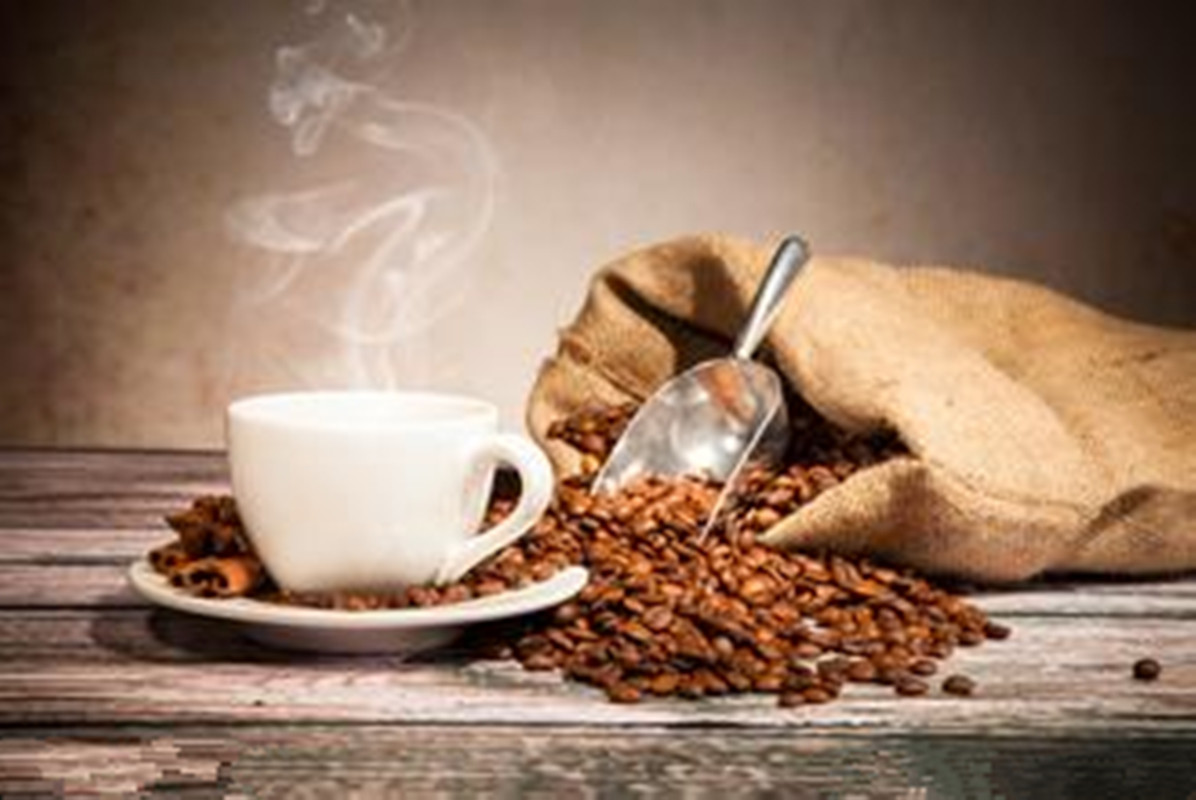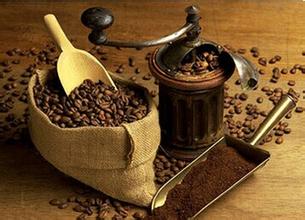Coffee teaching class: explaining the main points of the theoretical knowledge of the golden cup rule of coffee.

Today we are going to discuss coffee's so-called "Gold Cup Theory." Some people don't like the Gold Cup Theory because the name seems to imply that meeting this criterion is "super good coffee." Actually, I agree that coffee that doesn't conform to the Gold Cup theory is delicious, but it's a bit strange to say that we can completely ignore the Gold Cup theory. Maybe it's called "extraction theory". Maybe we don't have any opinions. In fact, what we want to talk about is extraction.
Coffee beans ground into coffee powder, not everything can be dissolved in water, we try again, again violence, at most can only extract about 30%. But this 30% contains flavors we don't like, so most coffee people would probably agree that our goal is to extract 20%. If we think about it a little bit more up and down, it's about
18% - 22%
It's an acceptable range. So, no matter how we brew coffee, hand brew, match style, or even espresso, the final goal is 18%-22% extraction.
You probably know how to improve the extraction rate of coffee (and vice versa), we will give you a few ways to improve the extraction rate:
Increase the boiling water temperature
Grind the beans a little.
Longer brewing time
stir harder
Anyway, the goal is 18%-22%. Every time you brew coffee, try to pull the extraction rate into this range. That's it. That's the point of the Golden Cup Theory.
What? No more?
I really want to say it. That's it. But you might have a problem with that. How do we know the extraction rate when we make coffee? It seemed to me that this was a very simple question, and that it was the beginning of all trouble.
What the rate of extraction is is easy to explain. We want to know exactly how much of the coffee powder goes into our coffee, and that's naturally
Coffee extract = coffee powder weight before brewing-coffee powder weight after brewing
And the extraction rate is
Extraction rate = coffee extract/coffee powder weight before brewing
Remember (again) that between 18% and 22% you go to heaven, less than 18% is called "under-extraction" and more than 22% is called "over-extraction." Is that a problem? All right, no problem, we'll go up here... what? Is there a problem? Where there is a problem, brewing coffee powder weight is of course a quantity before boiling (remember strictly speaking is "ground" weight, but so nitpicking things we will talk about later). The weight after brewing is, of course, the weight of the coffee grounds after brewing.
Wait, smart guy, did you find out? Coffee grounds are actually ground coffee, with some water attached to it. What if we just want to know how much coffee is left? It's "easy", just think of a way to dry it, and measure it later. And so, in the past, people have come up with great ideas
oven drying method
Every time you finish brewing coffee, the coffee grounds left over are dried, dried, and then taken out to measure the weight…
So, you make a cup of coffee, you wait for the oven to bake it for you, you measure it again, you take out your computer and you press it, and finally... what, you take it a little higher? So you adjust it again, rinse it again, dry it in the oven, count it again... what? It's too low... At this point, I don't think anyone in their right mind would want to do it all over again.
So, we're going to think of something else. Now we just need to remember one thing: any coffee brewing, the goal is to achieve
18% - 22%
The extraction rate.
Our goal is to extract about 20% coffee. to preserve some room, we allow 18% to 22% to be acceptable. To achieve this goal, of course, does not mean that we have got the perfect coffee. But to extract coffee correctly, it basically has to meet this extraction rate.
Then we found that it was difficult to measure how much coffee actually made it into our final cup. Because we need to know how much less powder we grind, and this powder is soaked and saturated with water, it is difficult to calculate the net weight. And so we thought: If we could measure directly how much coffee we end up with in that cup of coffee, wouldn't everything be perfect?
Is it possible? Of course you can! because water, basically, um, water. So there's something else in our lovely coffee, and that's probably coffee. So, if we can measure TDS, we know how much weird stuff--no, coffee--is in the water.
We're going to express TDS as a percentage, so let's say we make 400 grams of coffee. Now, there's this amazing TDS meter, and if the TDS comes out at 1.5%, that means it has coffee in it.
Amount of coffee extracted = coffee we brewed * TDS = 400 * 1.5% = 6
That's 6 grams of coffee! If my original coffee powder used 30g, that means our lovely extraction rate is
Amount of coffee extracted/amount of coffee used = 6/30 = 0.2 = 20%
Exactly what we need! It's really touching, really is a master, don't clap…what with what, this is originally their own numbers as an example, of course, to be more accurate. Then we know that measuring TDS is a big deal, so we're going to show you how to do it next.
The TDS of coffee also allows us to discuss the "concentration" of coffee. We know that everyone's taste is different, so in fact TDS is not like the previous extraction rate, not in a certain range. Each country will set its own TDS "reference value" according to its own preferences, such as:
SCAA: 1.15% - 1.35%
This is a relatively light route, and it becomes Europe.
European SCAE: 1.25% - 1.45%
Obviously Europe accepts stronger coffee, but Norway, also in Europe, doesn't think that's enough, so their standard is
Norway NCA: 1.3% - 1.55%
Taiwan may be closer to the Norway standard, but you can like higher and lower concentrations, but pay attention to the extraction rate or 18% - 22%.
The Gold Cup theory has existed for at least half a century, but one of the reasons why it has received attention in recent years is probably that we have a very convenient tool for measuring coffee TDS-Coffee/Espresso Refractometer launched by VST. There are many tools for measuring TDS, and some people say that sugar meters can also be used, but these are not so reliable, mainly for coffee proper measurement range and accuracy problems. This is a good topic to talk about, and we're going to talk about it in the future, but for now let's look at how the meter works.
First of all, you're here.
VST Store
There are two types of refractometer, new/old, and in each type there are:
Coffee version: used to measure coffee
Coffee/Espresso Edition: Coffee and espresso general edition
Bundle version: Attach ExtractMoJo Pro version
Basically, I think you don't have to ExtractMoJo, because when you finish reading this series, you'll be able to calculate all this. But nature ExtractMoJo is convenient for you to do these, there are famous gold cup map, if not so care about the price is not cheap, or do not want to calculate, but also can be used. In addition, VST launched different versions of MoJoToGo on iPhone and iPad respectively, which are cheaper, especially the iPhone version, which can be considered.
We are here to introduce the "old version" of the machine is how to use. the reason for this, of course, is because i only have the old version. So I'm just going to give you a little bit of a sense of how it's going to work, and then how it's going to work.
Step 1. Cool the coffee.
One thing to note is that the TDS measurement seems to measure how much other substances are dissolved in the water, but in fact it is measured in terms of refractive index (this is another mouth bubble lesson we will introduce later). These calculations depend on temperature, so be careful that your measuring machine and coffee are kept at room temperature! In other words, hot coffee, don't get excited and put it on the VST Coffee Refractometer! We need to put a little coffee into a dry and clean cup, wait until the temperature, and then put it on the machine to measure TDS.
Step 2. Drop a few drops of coffee onto the VST Coffee Refractometer. Wait a minute.
Wait for the purpose, of course, let the coffee, the machine to determine the same temperature, stable, then the most important step…
Step 3. Press READ to read the TDS value
If it is not TDS, press MODE button, press a few times will be to TDS value (it is easy to distinguish, is 1.43 such a number is).
Finally, of course, is to clean up your lovely measuring machine, and then to calculate your grades.
Calibrate your VST Coffee Refractometer
To correct, take pure water on the machine, of course, the same should pay attention to temperature problems. Then press CAL for at least five seconds, then press READ while holding CAL, and finally run until you see END appear and correct. This is the old version of the calibration method, the new version seems to be a little easier.
We will now begin by discussing the extraction rate calculation of the manual method. Some people may wonder why we need to discuss extraction rates according to different brewing methods. And wait a minute will find that the calculation of extraction rate by hand impact method is basically the calculation method of extraction rate recognized by most people. However, if you use this calculation method to calculate the extraction rate of Syphon, AeroPress and other brewing methods, it may be wrong! I think a lot of coffee connoisseurs use a lot more ground coffee than they do in a hand-brewed Syphon. If you use the manual method to calculate the extraction rate, you may mistake it for insufficient extraction, and then use various brutal methods to get the "correct" but "strange" extraction rate! What is the reason for this? We'll explain that next time.
Today we will first come to the standard type of hand impact method calculation, in fact, even if the hand impact method has a lot of "interesting"(that is, complex) places, we are a simple version today, after the mouth gun version will be detailed to explain the complete calculation.
The formula for standard extraction rate is simple:
[Example]
Using 30g of coffee powder, brew 400g of coffee, the TDS concentration is 1.5%. If we calculate the extraction rate, it will be:
400 x 0.015 / 30 = 0.2
That's 20%. Perfect extraction!
Wait, isn't that how we started? That's right, this is the standard extraction rate algorithm. But again, this is only possible with a hand-brewed coffee machine (of course, this is also true of imitation hand-brewed American coffee machines). Another important point is that you must calculate the weight of the "finished coffee". In other words, you may want to know the weight of the pot you are using, and finally measure the coffee + pot weight, and then subtract the pot weight.
Generally speaking, this simple calculation is also good. But a lot of times, we wonder:
I want to brew a cup of coffee (236cc), if the TDS concentration is 1.5%, how much powder and how much water does it need?
If I wanted my coffee strong (weak), how much would I catch for the gouache ratio?
In short, we want to know how much water we need when we make it, so that we can control it when we make it. In addition, we would like to calculate in advance the right ratio of water to coffee powder, i.e. our brewing recipe. When it's too strong or too weak, we also want to know how to adjust it so that we can make a weaker or stronger coffee, but extract it correctly.
Reprinted from Teacher Yan Long's Gold Cup Theory of Coffee
Important Notice :
前街咖啡 FrontStreet Coffee has moved to new addredd:
FrontStreet Coffee Address: 315,Donghua East Road,GuangZhou
Tel:020 38364473
- Prev

Boutique coffee growing areas: Brazilian coffee growing areas rating
Brazil is significantly lower in elevation than other producing countries in Central and South America, with a greater proportion of estates below 1,000 meters. The landscape here is flat and monotonous, lacks microclimate, and is accustomed to using non-shade tree (insolation) cultivation methods, thus developing Brazil's unique soft bean flavor-low acidity, nutty, chocolate sweet and mellow, but slightly woody and earthy, floral and
- Next

World Coffee Science: understanding the Historical and Cultural Source of World Coffee Coffee must see the knowledge points
The Discovery and spread of Coffee how was coffee discovered? When people taste mellow coffee, they can't help but ask such questions. According to Roth de Neroy, a Roman linguist, around the sixth century AD, an Arab shepherd named Caldai was very excited and excited to see every goat when he went to graze on the grasslands of Ethiopia. It made him
Related
- What is the meaning of lactic acid fermentation with coffee bean treatment?
- How to judge the state of foam by sound?
- How does the latte pull out the unicorn pattern? Come to get for a little trick to improve the flower pull!
- Will flower pulling affect the taste of the latte?
- Do you know the history of coffee?
- The difference between honey treatment and sun washing what is raisin honey treatment?
- What kind of milk can a novice use to make coffee foam to keep the foam longer? The correct method and skills of milking tutorial sharing
- Why do washed coffee beans taste sour? Flavor characteristics of washed Coffee
- Introduction to the skill of how to practice the size and height of water injection around the circle of hand-brewed coffee
- How do beginners practice coffee flower drawing from scratch?

